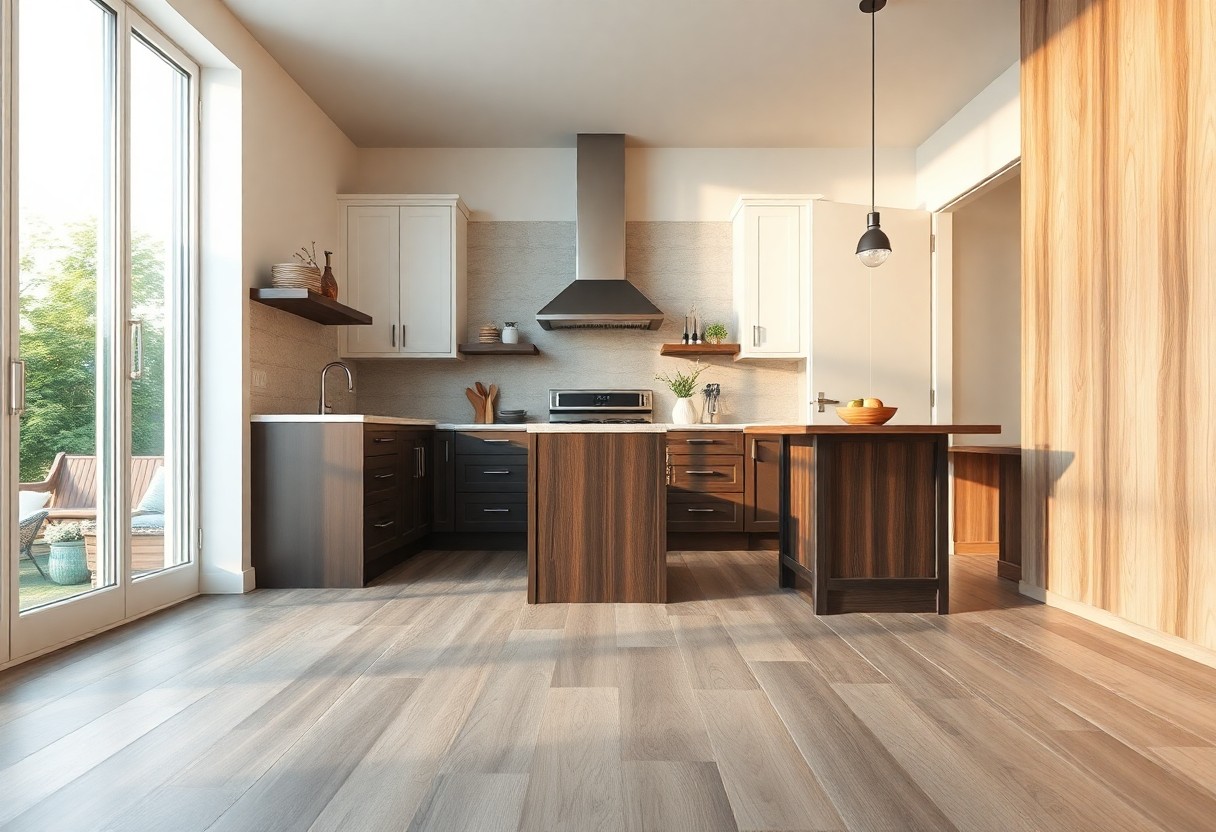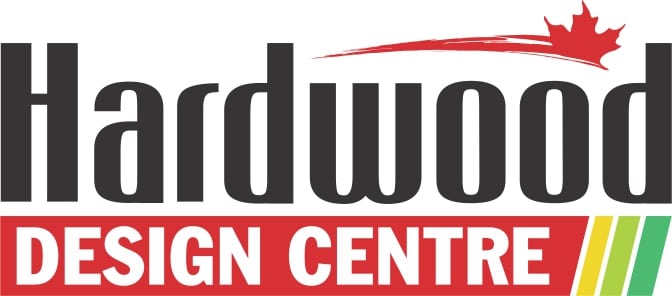SPC vinyl flooring offers a unique combination of durability and aesthetic appeal, making it an attractive option for homeowners. In contrast, laminate flooring provides a cost-effective solution with its versatile designs. As you weigh your options, consider factors like moisture resistance, ease of installation, and maintenance requirements to determine which flooring type best suits your lifestyle and home environment. Understanding the differences between these two materials will help you make an informed decision tailored to your needs.
The Battle of Durability: SPC Vinyl Flooring vs. Laminate Flooring
Core Composition and Structure
SPC vinyl flooring consists of a rigid core made from a combination of limestone and PVC, making it exceptionally dense and resilient. This construction ensures a stable surface that handles foot traffic efficiently. Laminate flooring, on the other hand, typically features a composite wood core that can be more susceptible to damage under pressure. While both options offer durability, the unique structure of SPC gives it an edge in terms of longevity and impact resistance.
Resistance to Water, Scratches, and Fading
SPC vinyl flooring excels in water resistance due to its watertight core, making it ideal for areas prone to moisture. In contrast, laminate flooring can suffer in wet conditions, as water can seep through seams and damage the core. Both flooring types are designed to resist scratches and fading, with SPC often outperforming laminate because its top layer is engineered to endure daily wear and tear effectively.
SPC vinyl flooring offers superior protection against various environmental factors that can compromise your flooring’s appearance over time. Unlike laminate, which may warp or swell if exposed to excessive moisture, SPC’s waterproof design effectively safeguards against spills and humidity, making it great for kitchens and bathrooms. Additionally, with a wear layer that can range from 20 mil to 30 mil, you gain assurance against scratches and everyday impacts, ensuring your floors maintain their aesthetic and functionality longer than traditional laminate options.

Aesthetic Appeal: Visuals That Make or Break a Space
The aesthetic quality of flooring can profoundly impact the ambiance of your home. SPC vinyl flooring offers a vast array of visually appealing designs, from wood and stone looks to bold patterns, enhancing any room’s character. In contrast, laminate flooring also provides diverse style options, although its finishes may lack the intricate depth and realism found in SPC products. Choosing the right flooring is crucial—consider how it complements your décor and personal taste.
Design Options and Customization
You can personalize your space with abundant design options in both SPC vinyl and laminate flooring. SPC offers a broad palette of colors and textures, ranging from rustic wood grains to sleek tiles. Meanwhile, laminate flooring provides various themes and patterns, enabling you to achieve a customized look that aligns with your home’s aesthetic. Both options allow you to express your style while maintaining functionality.
Realism in Texture and Finish
Realistic texture and finish play a significant role in the overall visual appeal of your flooring. SPC vinyl often mimics natural materials with impressive accuracy, offering textures that feel as authentic as they look. Laminate, designed to resemble wood or stone, can sometimes fall short in conveying the tactile experience associated with its real counterparts, making SPC a more suitable choice for realism enthusiasts.
SPC vinyl excels in creating a lifelike experience with its embossed finishes and textured surfaces, which can replicate the grain of wood or the cool feel of stone. This level of detail not only enhances visual appeal but also contributes to the flooring’s overall authenticity, adding depth to your interior design. In comparison, laminate often relies on printed surfaces that might lack the same tactile quality, resulting in a less immersive experience when interacting with the floor. Investing in SPC vinyl can elevate your home’s aesthetic with both sight and touch, connecting your design elements more naturally.
Installation Made Simple: Which Floor Comes Out on Top?
Ease of Installation Techniques
SPC vinyl flooring often features a click-lock installation system, making it suitable for homeowners seeking DIY solutions. Laminate flooring can also utilize similar technology, but some varieties may require adhesive for a secure fit. This flexibility in SPC vinyl allows you to complete the project quicker with less mess, enabling easier adjustments during the placement process.
Time and Cost Considerations
Installation time can significantly influence your decision between SPC vinyl and laminate flooring. Typically, SPC flooring installations are faster, often taking just a few hours to complete for a standard room. Laminate may require additional steps, such as acclimation, which can prolong the process. Additionally, SPC vinyl often comes with a higher initial cost but incurs fewer long-term expenses due to its durability.
When evaluating time and cost, take into account labor expenses alongside material costs. Installing SPC vinyl flooring generally requires fewer tools and shorter installation time, saving you on labor, especially if hiring professionals. In contrast, laminate flooring may result in slightly lower upfront material costs, but the extended installation time can lead to increased labor costs. Overall, the quick installation of SPC vinyl often offsets its higher material price, making it a more economical choice in the long run.
The Price Tag Debate: What Each Flooring Option Costs You
Understanding the costs associated with SPC vinyl and laminate flooring is imperative for making an informed decision for your home. SPC vinyl typically has a higher initial price, ranging from $2 to $5 per square foot, while laminate costs can be more budget-friendly, averaging between $1 and $3 per square foot. However, the long-term value you receive from each option can significantly vary based on durability, maintenance, and lifespan.
Initial Investment vs. Long-Term Value
Your initial investment in flooring goes beyond the purchase price; it involves considering the longevity and maintenance costs as well. SPC vinyl, though pricier upfront, can last 20 years or more with minimal upkeep, while laminate may need replacing in 10 to 15 years. Quality, warranty, and performance under wear contribute to long-term value.
Factors Influencing Total Ownership Cost
The total cost of ownership for your flooring choice can be influenced by several factors. These include installation fees, maintenance requirements, and the environment where the flooring will be used. Additionally, consider potential repair costs and how each type handles moisture, scratches, and wear over time.
- Installation complexity and labor costs.
- Frequency and cost of cleaning or maintenance products.
- Repair or replacement costs over the flooring’s lifespan.
- Impact of humidity or moisture on flooring longevity.
- Potential for trend changes requiring updates or replacements.
Various aspects can contribute significantly to your total ownership costs. For instance, SPC vinyl’s water-resistant nature reduces expenses related to moisture damage, making it a wise choice in high-humidity areas like bathrooms or basements. Additionally, laminate’s susceptibility to scratches may lead to more frequent repairs or replacements, especially in high-traffic zones.
- Regional labor cost variances affecting installation pricing.
- Discounts on bulk purchases for larger areas.
- Warranty terms that impact replacement costs.
- Durability of the flooring’s finish affecting maintenance needs.
- Environmental considerations that might demand special treatments.
Environmental Impact: Weighing Eco-Friendly Choices
In an era where sustainable living is gaining traction, evaluating the environmental impact of flooring choices is necessary. SPC vinyl and laminate flooring both come with distinct ecological footprints, from material sourcing to end-of-life disposal. Your choice can reflect not just aesthetics but a commitment to sustainability. Making an informed decision involves considering how each option aligns with your values regarding the environment.
Material Sourcing and Sustainability
SPC vinyl flooring primarily uses virgin PVC, which has raised concerns regarding petrochemical sourcing. In contrast, some laminate options utilize recycled wood and eco-friendly adhesives, reducing their overall environmental impact. While SPC can be manufactured with less energy, finding brands that prioritize sustainable practices is key to ensuring your choice supports eco-friendly initiatives.
Life Cycle Analysis: Maintenance and Disposal
The longevity and disposal methods of your flooring significantly impact its environmental footprint. SPC vinyl typically lasts 20-30 years with minimal maintenance, whereas laminate often requires more attention to avoid water damage. Disposal can pose challenges; SPC is not biodegradable but can sometimes be recycled, while laminate is often discarded in landfills unless recycling options are available.
Your flooring choice’s life cycle impacts not just its performance but also its sustainability implications. Maintaining SPC vinyl involves simple cleaning routines that ensure durability without harsh chemicals, whereas laminate demands careful maintenance to avoid warping. Disposal is another consideration; while some SPC products can be recycled, disposal methods for laminate often lead to landfill accumulation, making it imperative to weigh your options thoroughly for an eco-conscious decision.
To wrap up
Now that you have examined the differences between SPC vinyl flooring and laminate flooring, you can make a more informed decision for your home. Consider your lifestyle, budget, and aesthetic preferences when choosing the right flooring option. SPC vinyl offers superior water resistance and durability, making it ideal for high-moisture areas, while laminate provides a wide range of design options at a more budget-friendly price. Evaluate your specific needs to find the flooring solution that best enhances your space.

